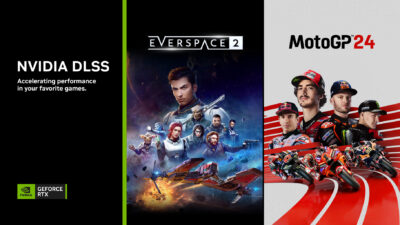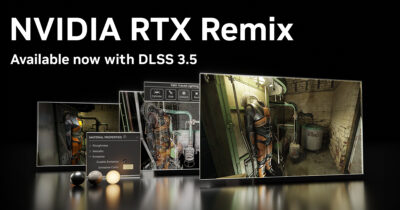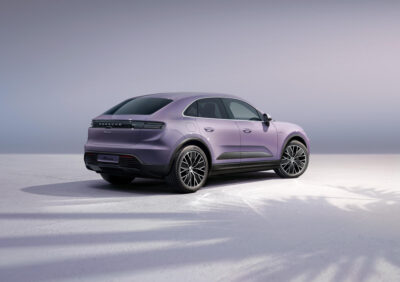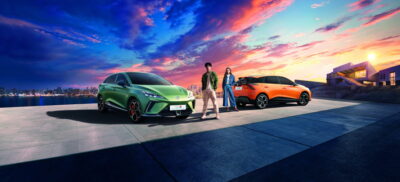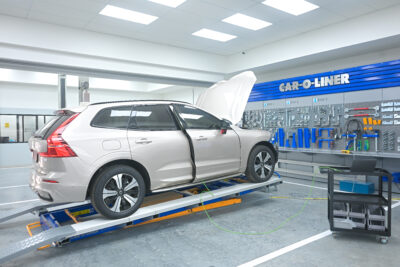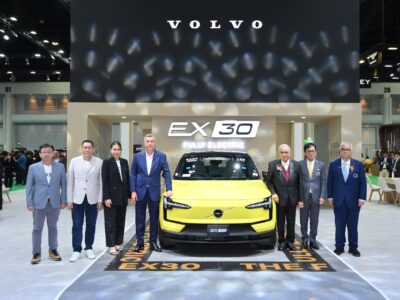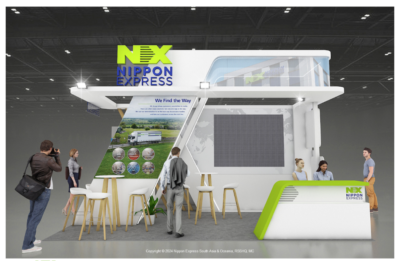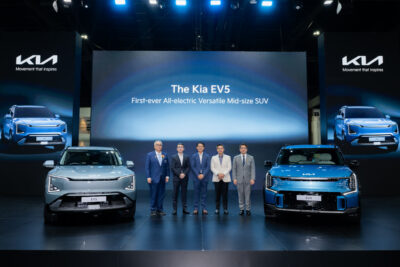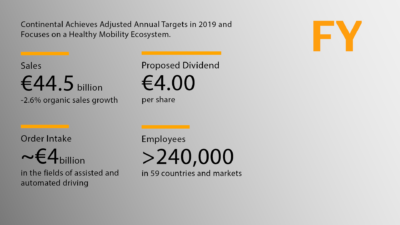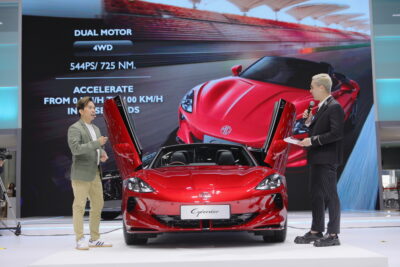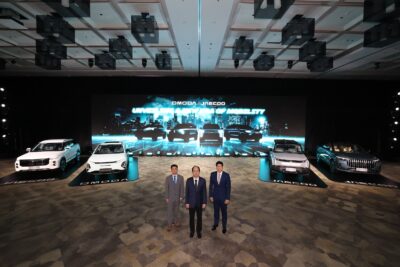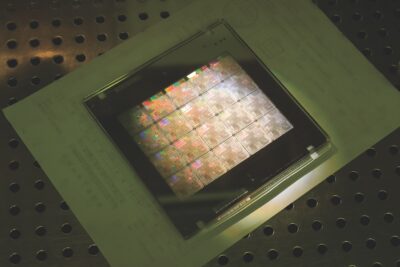NVIDIA unveiled the world’s first artificial intelligence computer designed to drive fully autonomous robotaxis.

The new system, codenamed Pegasus, extends the NVIDIA? DRIVE? PX AI computing platform to handle Level 5 driverless vehicles. NVIDIA DRIVE PX Pegasus delivers over 320 trillion operations per second — more than 10x the performance of its predecessor, NVIDIA DRIVE PX 2.
NVIDIA DRIVE PX Pegasus will help make possible a new class of vehicles that can operate without a driver — fully autonomous vehicles without steering wheels, pedals or mirrors, and interiors that feel like a living room or office. They will arrive on demand to safely whisk passengers to their destinations, bringing mobility to everyone, including the elderly and disabled.
Millions of hours of lost time will be recaptured by drivers as they work, play, eat or sleep on their daily commutes. And countless lives will be saved by vehicles that are never fatigued, impaired or distracted — increasing road safety, reducing congestion and freeing up valuable land currently used for parking lots.
Of the 225 partners developing on the NVIDIA DRIVE PX platform, more than 25 are developing fully autonomous robotaxis using NVIDIA CUDA GPUs. Today, their trunks resemble small data centers, loaded with racks of computers with server-class NVIDIA GPUs running deep learning, computer vision and parallel computing algorithms. Their size, power demands and cost make them impractical for production vehicles.
The computational requirements of robotaxis are enormous — perceiving the world through high-resolution, 360-degree surround cameras and lidars, localizing the vehicle within centimeter accuracy, tracking vehicles and people around the car, and planning a safe and comfortable path to the destination. All this processing must be done with multiple levels of redundancy to ensure the highest level of safety. The computing demands of driverless vehicles are easily 50 to 100 times more intensive than the most advanced cars today.
“Creating a fully self-driving car is one of society’s most important endeavors — and one of the most challenging to deliver,” said Jensen Huang, NVIDIA founder and CEO. “The breakthrough AI computing performance and efficiency of Pegasus is crucial for the industry to realize this vision.
“Driverless cars will enable new ride- and car-sharing services. New types of cars will be invented, resembling offices, living rooms or hotel rooms on wheels. Travelers will simply order up the type of vehicle they want based on their destination and activities planned along the way. The future of society will be reshaped,” he said.

Broad Industry Support
Virtually all carmakers, transportation as a service companies, as well as startups are using NVIDIA AI in the development of Level 5 vehicles.
“NVIDIA gets it. And their DRIVE PX Pegasus will get us to Level 5.”
— Tim Kentley-Klay, CEO and co-founder, Zoox
“We plan to put NVIDIA DRIVE PX Pegasus into production in our autonomous vehicles.”
— Sertac Karaman, president and co-founder, Optimus Ride
“The breakthrough AI performance and capabilities of the NVIDIA DRIVE PX Pegasus platform will ensure the reliability and safety of our autonomous trucking fleet.”
— Xiaodi Hou, CTO, TuSimple
“NVIDIA DRIVE PX 2 is the brain of our self-driving prototypes, and we can’t wait to get our hands on NVIDIA DRIVE PX Pegasus.”
— Dmitry Polischuk, head of self-driving, Yandex.Taxi
“NuTonomy is building for Level 5 and Pegasus is the kind of platform that will be required to support these types of systems.”
— Karl Iagnemma, CEO and co-founder, NuTonomy
“Today dozens of companies are racing to develop robotaxis, but they are still gated by the massive computation needs of a truly driverless car,” said Luca De Ambroggi, senior principal automotive analyst at IHS Markit. “The new NVIDIA DRIVE PX Pegasus shows the path to production for the automakers, startups and automotive ecosystem working to deliver this amazing vision.”
autonomous Delivery Truck Fleet
GTC Europe – NVIDIA today announced that Deutsche Post DHL Group (DPDHL), the world’s largest mail and logistics company, and ZF, one of the world’s largest automotive suppliers, have partnered together to deploy a test fleet of autonomous delivery trucks, starting in 2018.
DPDHL will outfit electric light trucks with the ZF ProAI self-driving system, based on NVIDIA DRIVE? PX technology, for automating package transportation and delivery, including the “last mile” of deliveries. Taking packages from a central point to their final destinations is considered the most complex and costliest aspect of courier and e-commerce deliveries.
DPDHL currently has a fleet of 3,400 StreetScooter electric delivery vehicles, which can be equipped with ZF’s multiple sensors, including cameras, lidar and radar, that feed into the ZF ProAI system. This can enable the vehicle to use AI to understand its environment, plan a safe path forward, proceed along a selected route and park itself — ensuring deliveries can be made with greater accuracy and safety, and at lower cost.
“The development of autonomous delivery vehicles demonstrates how AI and deep learning are also reshaping the commercial transportation industry,” said Jensen Huang, NVIDIA founder and CEO. “As online shopping continues to explode, and the shortage of truck drivers becomes more dire, AI-enabled vehicles will be key to providing last-mile delivery services.”
“Research and development of ecological, economical and efficient transportation will bring dramatic changes to the logistics industry,” said J?rgen Gerdes, member of the Board of Management at Deutsche Post AG. “Partnering with NVIDIA and ZF will enable us to responsibly support this development, benefit from it and reinforce our position as the industry?s innovation leader.”
“In its StreetScooter fleet, Deutsche Post DHL is taking its next step with our current and future generation of surround sensor technology and ZF ProAI artificial intelligence brain powered by NVIDIA,” said Stefan Sommer, CEO of ZF. “ZF ProAI is the brain between our autonomous driving sensor set to detect and understand the environment, and our motion control based on outstanding mechanical competence — the entire system follows our ‘see – think – act’ approach. In supply logistics and on the last mile where autonomous driving has tremendous benefits, goods can be delivered independent of the time of the day and delivery staff, with minimal noise and emissions, thus significantly reducing traffic congestion in city centers.”
To develop these AI delivery vehicles, DPDHL has already configured its data center with the NVIDIA DGX-1? AI supercomputer for training its neural networks. It will then run its deep learning models on the truck’s NVIDIA DRIVE PX platform. A prototype delivery vehicle unveiled today uses six cameras, one radar and two lidar — all feeding into the NVIDIA DRIVE PX.
Demonstrations of the DPDHL delivery prototype are taking place at the GPU Technology Conference in Munich through October 12.
NVIDIA unveiled the world's first artificial intelligence computer designed to drive fully autonomous robotaxis.

The new system, codenamed Pegasus, extends the NVIDIA? DRIVE? PX AI computing platform to handle Level 5 driverless vehicles. NVIDIA DRIVE PX Pegasus delivers over 320 trillion operations per second -- more than 10x the performance of its predecessor, NVIDIA DRIVE PX 2.
NVIDIA DRIVE PX Pegasus will help make possible a new class of vehicles that can operate without a driver -- fully autonomous vehicles without steering wheels, pedals or mirrors, and interiors that feel like a living room or office. They will arrive on demand to safely whisk passengers to their destinations, bringing mobility to everyone, including the elderly and disabled.
Millions of hours of lost time will be recaptured by drivers as they work, play, eat or sleep on their daily commutes. And countless lives will be saved by vehicles that are never fatigued, impaired or distracted -- increasing road safety, reducing congestion and freeing up valuable land currently used for parking lots.
Of the 225 partners developing on the NVIDIA DRIVE PX platform, more than 25 are developing fully autonomous robotaxis using NVIDIA CUDA GPUs. Today, their trunks resemble small data centers, loaded with racks of computers with server-class NVIDIA GPUs running deep learning, computer vision and parallel computing algorithms. Their size, power demands and cost make them impractical for production vehicles.
The computational requirements of robotaxis are enormous -- perceiving the world through high-resolution, 360-degree surround cameras and lidars, localizing the vehicle within centimeter accuracy, tracking vehicles and people around the car, and planning a safe and comfortable path to the destination. All this processing must be done with multiple levels of redundancy to ensure the highest level of safety. The computing demands of driverless vehicles are easily 50 to 100 times more intensive than the most advanced cars today.
"Creating a fully self-driving car is one of society's most important endeavors -- and one of the most challenging to deliver," said Jensen Huang, NVIDIA founder and CEO. "The breakthrough AI computing performance and efficiency of Pegasus is crucial for the industry to realize this vision.
"Driverless cars will enable new ride- and car-sharing services. New types of cars will be invented, resembling offices, living rooms or hotel rooms on wheels. Travelers will simply order up the type of vehicle they want based on their destination and activities planned along the way. The future of society will be reshaped," he said.

Broad Industry Support
Virtually all carmakers, transportation as a service companies, as well as startups are using NVIDIA AI in the development of Level 5 vehicles.
"NVIDIA gets it. And their DRIVE PX Pegasus will get us to Level 5." -- Tim Kentley-Klay, CEO and co-founder, Zoox
"We plan to put NVIDIA DRIVE PX Pegasus into production in our autonomous vehicles."
-- Sertac Karaman, president and co-founder, Optimus Ride
"The breakthrough AI performance and capabilities of the NVIDIA DRIVE PX Pegasus platform will ensure the reliability and safety of our autonomous trucking fleet."
-- Xiaodi Hou, CTO, TuSimple
"NVIDIA DRIVE PX 2 is the brain of our self-driving prototypes, and we can't wait to get our hands on NVIDIA DRIVE PX Pegasus." -- Dmitry Polischuk, head of self-driving, Yandex.Taxi "NuTonomy is building for Level 5 and Pegasus is the kind of platform that will be required to support these types of systems." -- Karl Iagnemma, CEO and co-founder, NuTonomy
"Today dozens of companies are racing to develop robotaxis, but they are still gated by the massive computation needs of a truly driverless car," said Luca De Ambroggi, senior principal automotive analyst at IHS Markit. "The new NVIDIA DRIVE PX Pegasus shows the path to production for the automakers, startups and automotive ecosystem working to deliver this amazing vision."
autonomous Delivery Truck Fleet
GTC Europe - NVIDIA today announced that Deutsche Post DHL Group (DPDHL), the world's largest mail and logistics company, and ZF, one of the world's largest automotive suppliers, have partnered together to deploy a test fleet of autonomous delivery trucks, starting in 2018.DPDHL will outfit electric light trucks with the ZF ProAI self-driving system, based on NVIDIA DRIVE? PX technology, for automating package transportation and delivery, including the "last mile" of deliveries. Taking packages from a central point to their final destinations is considered the most complex and costliest aspect of courier and e-commerce deliveries.
DPDHL currently has a fleet of 3,400 StreetScooter electric delivery vehicles, which can be equipped with ZF's multiple sensors, including cameras, lidar and radar, that feed into the ZF ProAI system. This can enable the vehicle to use AI to understand its environment, plan a safe path forward, proceed along a selected route and park itself -- ensuring deliveries can be made with greater accuracy and safety, and at lower cost.
"The development of autonomous delivery vehicles demonstrates how AI and deep learning are also reshaping the commercial transportation industry," said Jensen Huang, NVIDIA founder and CEO. "As online shopping continues to explode, and the shortage of truck drivers becomes more dire, AI-enabled vehicles will be key to providing last-mile delivery services."
"Research and development of ecological, economical and efficient transportation will bring dramatic changes to the logistics industry," said J?rgen Gerdes, member of the Board of Management at Deutsche Post AG. "Partnering with NVIDIA and ZF will enable us to responsibly support this development, benefit from it and reinforce our position as the industry?s innovation leader."
"In its StreetScooter fleet, Deutsche Post DHL is taking its next step with our current and future generation of surround sensor technology and ZF ProAI artificial intelligence brain powered by NVIDIA," said Stefan Sommer, CEO of ZF. "ZF ProAI is the brain between our autonomous driving sensor set to detect and understand the environment, and our motion control based on outstanding mechanical competence -- the entire system follows our 'see - think - act' approach. In supply logistics and on the last mile where autonomous driving has tremendous benefits, goods can be delivered independent of the time of the day and delivery staff, with minimal noise and emissions, thus significantly reducing traffic congestion in city centers."
To develop these AI delivery vehicles, DPDHL has already configured its data center with the NVIDIA DGX-1? AI supercomputer for training its neural networks. It will then run its deep learning models on the truck's NVIDIA DRIVE PX platform. A prototype delivery vehicle unveiled today uses six cameras, one radar and two lidar -- all feeding into the NVIDIA DRIVE PX.
Demonstrations of the DPDHL delivery prototype are taking place at the GPU Technology Conference in Munich through October 12.


